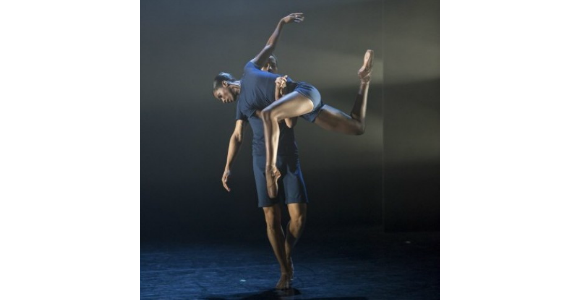Ballet Black – Linbury Studio Theatre, London
Director: Cassa Pancho
Reviewer: Luke Jennings
Rating: 4*
Ballet Black review – oldschool charm, newage wit
BB’s new mixed programme at the Royal Opera House shows off the company’s considerable strength and range
Cassa Pancho founded Ballet Black in 2001 to provide a showcase for classical dancers of black and Asian descent and to introduce ballet to new audiences. Since then the company has gone from strength to strength, performing a highly diverse repertoire. Over the years, it’s been fascinating watching BB’s evolution. The men, currently headed by Damien Johnson, have always been notable for their chivalrous partnering and fine stage manners. Oldschool, selfdeprecating charm is the keynote of the house style, and very attractive it is.
It’s the contrast between the company’s female dancers that dictates the onstage dynamics. For several years principal roles were divided between Cira Robinson and the flamboyant Sarah Kundi. But with Kundi’s departure last year, the striking polarity is now between Robinson and Kanika Carr. Robinson is impermeable and selfcontained, the epitome of the staccato dancer. In Limbo, the opening piece of the company’s new programme, choreographed by Martin Lawrance to music by Hindemith, she’s all torque and spiral, exploding into her turns and leaps with fierce resolve. She shows you her power. She doesn’t make it look easy.
Limbo is followed by Christopher Marney’s Two of a Kind, set to the adagio from Tchaikovsky’s Souvenir de Florence and Ravel’s Pavane pour une infante défunte, two compositions which sit together uneasily. The piece is a fourhander but it’s Carr who holds the eye. Petite and feminine – perhaps the most instinctively classical dancer Ballet Black has ever presented – she processes enchaînements with quiet diligence before suddenly offering up a perfectly weighted turn or beautiful, winging arabesque. Marney’s choreography, like Lawrance’s, is overloaded with subtext (“one woman’s internal journey through the course of a changing relationship”) which the dance itself doesn’t convey. Nor does its regretful prettiness match the sense of loss implicit in the music. But both choreographers have, in some essential way, got the measure of the dancers and found imaginative ways to extend them.
Arthur Pita’s wonderfully entertaining A Dream Within a Midsummer Night’s Dream opens formally, with two couples dancing to Handel’s Sarabande. The scene then fractures and implodes with the entrance of Isabela Coracy’s Puck, a bizarre genderless figure in a scout’s uniform with a beard of flowers, to the sound of a mambo. He, or perhaps she, is a wilful lord of misrule, who liberates even as he confounds and confuses. Pita himself is more than a little Pucklike in his choreography, mischievously scrambling Shakespeare’s plot to pair off Lysander and Demetrius (Jacob Wye and José Alves) and Hermia and Helena (Carr and Sayaka Ichikawa) in wittily erotic duets. Robinson’s icy Titania wafts imperiously around the stage in tutu and tiara, mistress of all she surveys, before unaccountably finding herself succumbing to Bottom (Alves again) to the sound of Bewitched, Bothered and Bewildered sung by Barbra Streisand. It’s all very sultry and suggestive, and although Puck finally reverses the magic and restores the status quo ante, Pita makes it clear that the characters’ dreamselves are infinitely more real and true than their waking personae. What fools these mortals be.


